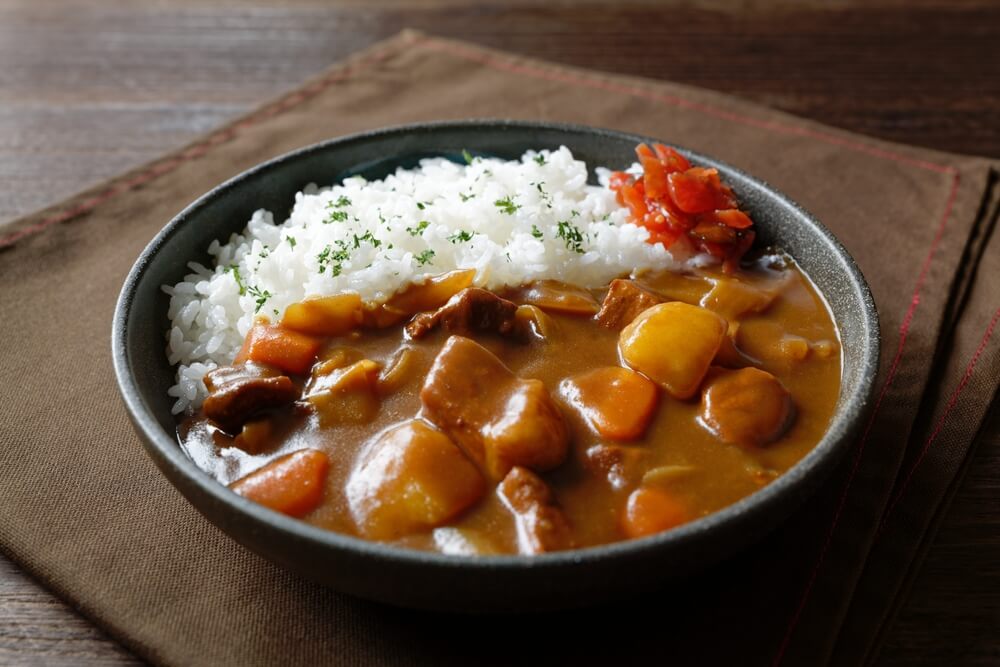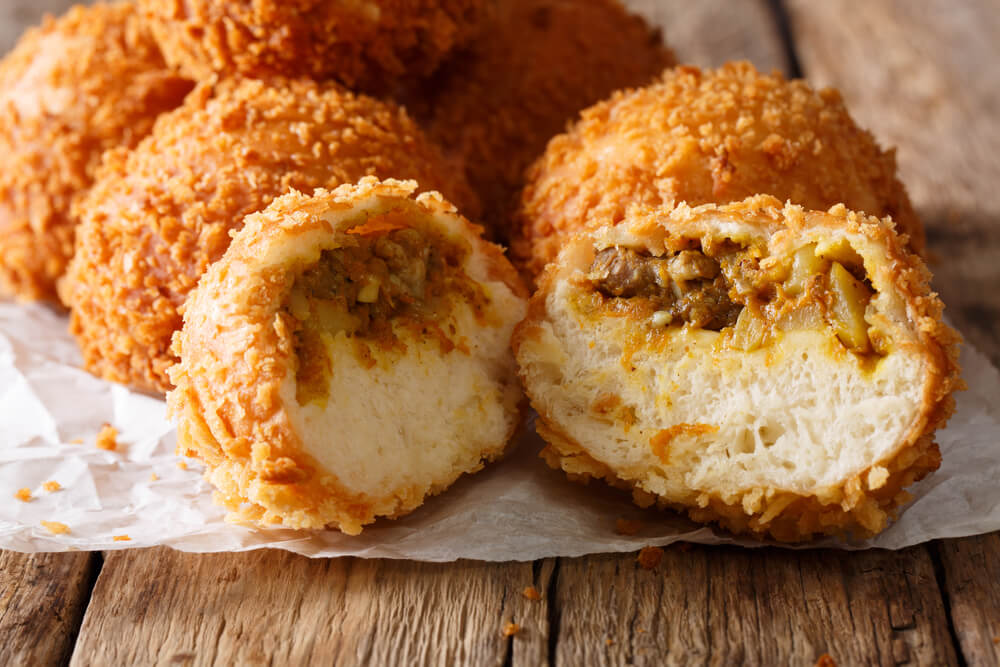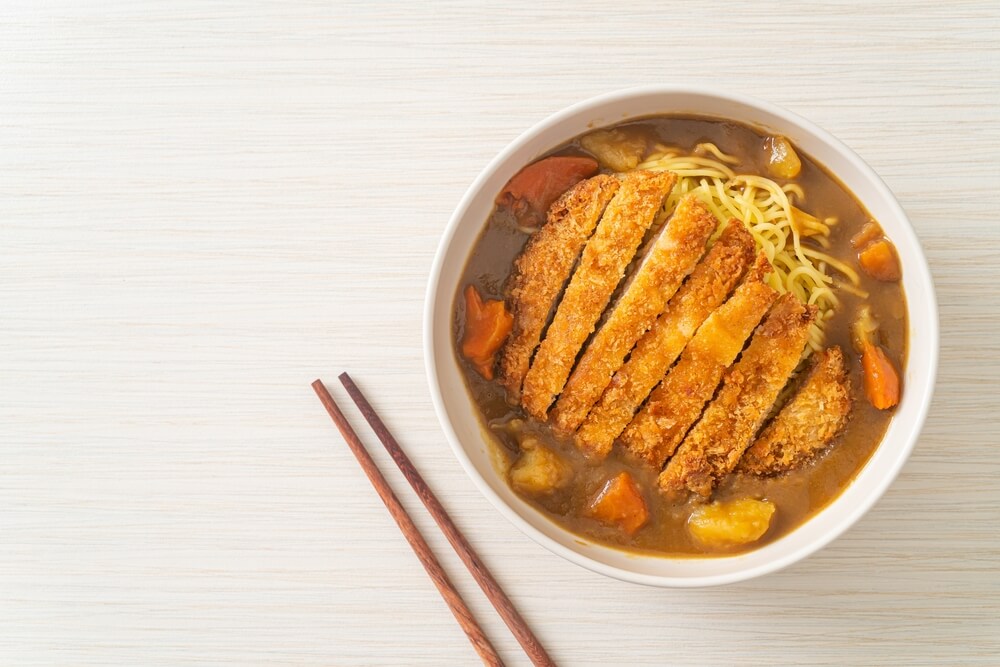Golden Curry: The Ultimate Guide to Japan's Favorite Curry Brand

Like many of Japan's favorite food items, curry was adapted to Japanese tastebuds after being introduced to the country in the 1800s (when Japan opened its ports to international goods). During this time, Japan saw an influx of Western foods and popular food items from other countries, like British curry powder. This powder was adapted to Japanese flavors, offering an umami-rich taste to recipes like kare rice (Japanese curry rice) after it was given its Japanese flair.
One of the most popular types of curry is golden curry, a roux that is bold in flavor yet less spicy than Indian or Thai curry. It features a beautiful golden color (hence its name) and lacks meat/meat products, so it's suitable for vegetarians, meat-eaters, and omnivores. Learn all about Japan's favorite curry brand (including tips on creating delicious golden curry at home) below.
Introduction to Golden Curry: Japan's Beloved Curry Brand
One step into any Japanese market, and you'll see a display of S&B golden curry available for purchase. This brand is considered one of the best curry options in Japan, as it is thick and decadent. It features aromatic spices and herbs and a rich umami flavor. It's also extremely convenient, as you can have Japanese curry ready to eat in only a few moments using Golden curry cubes.

This deliciously and simple roux has become an important ingredient in Japanese households as the demand for curry has risen. Over the years, kare rice has become one of the most widely consumed meals in the country. On average, people in Japan consume curry about 80 times per year. The convenience of Golden Curry, in combination with its versatility, has made this curry roux a staple in Japanese households.
The Rich History of Japanese Curry and Golden Curry's Rise
Back in the 1800s, after years of isolation, Japan decided to open its ports to international products. Among these products was British curry powder. It took quite a while for the first Japanese version of curry powder to come to fruition. S&B, the same company that created Golden Curry, was the first to produce homegrown Japanese curry powder in 1923.
From there, a commercial curry powder was launched. Then, the famous "Red Can" Curry Powder (still a pantry staple in Japan today) was created in 1950. In 1954, S&B took to the streets to promote curry by offering mobile cooking classes involving spices. This was the same year S&B's curry sauce was launched. In 1959, Monaka curry, a wafer shell filled with curry sauce, was released. Finally, in 1966, Golden Curry was released. This curry was meant to be a traditional offering that provided aromatic, spicy meals.
S&B continued to diversify its products, creating innovative items like the first curry for children, fresh herb bundles, and Curry Youbi, allowing them to stay at the forefront of the spice companies in Japan. Though S&B offers many products in the spice and curry industry, Golden Curry remains a popular choice among many due to its convenience and ease of use. This popularity has only grown during the last few years, as the option to enjoy a curry at a restaurant waned.
Decoding the Japanese Curry Roux: Golden Curry's Secret
One quick internet search on Golden curry roux'll find the following ingredients: Japanese curry powder, flour, spices, and seasoning. So, what exactly is this seasoning that makes Japanese curry oh-so-tasty? It's a combo of salt, sugar, MSG, chili pepper, pepper, garlic, chili pepper extract, celery seed, and mustard. When paired with the other ingredients of golden curry, this delightful spice mix provides a bold, sweet, spicy, umami flavor to recipes you won't find in other East Asian countries.

Cooking with Golden Curry: A Step-by-Step Japanese Curry Recipe
Japanese curry is great as a cooking ingredient, as it is easy to incorporate in most recipes. Simply toss some curry cubes in a pan, add water, and simmer. You'll have homemade Japanese curry in a few minutes. If you want to create a more filling recipe, you can follow the below instructions for a Japanese Chicken Curry Recipe.
Ingredients
-
Vegetable oil
-
Boneless skinless chicken thighs
-
S&B Golden Curry
-
Grated Apple
-
Water
-
Onion
-
Potato
-
Carrot
-
Garlic/Ginger
Directions
-
Saute the chopped onions in a pan with butter until they caramelize.
-
Add the aromatics and saute for about one minute until fragrant.
-
Put the chopped chicken thigh cubes into the pan and brown on all sides.
-
Add water to the pan and bring to a boil. Lower heat until the ingredients come to a simmer.
-
Toss in cubed potatoes and sliced carrots.
-
Allow the veggies to soften. Then, add grated apple.
-
Add golden curry cubes. Then, stir until the curry is mixed with the water well.
-
Allow the mixture to simmer for about 7 minutes or until the curry is thick but not overly thick.
-
Serve the curry over white rice.
-
Enjoy!
It's important to make Japanese curry the right consistency. If you notice your Golden Curry is too thick, you can add a small amount of water to thin it out. Likewise, if you've added too much water, you can let the curry simmer to thicken up. Or, you can add a cornstarch/flour roux to the sauce and let it simmer for a few minutes.

The Versatility of Curry Sauce: Beyond Curry Rice
Perhaps curry rice isn't your cup of tea. If that's the case, there are quite a few other dishes you can create to enjoy the savory curry sauce flavor. For example, instead of simmering curry sauce with meat/vegetables, you can add it to udon soup for a bolder flavor with every bite of noodles and broth. You can also make soup curry, a recipe that originated in Sapporo, Hokkaido. Soup curry is influenced by medicinal Chinese/Korean soups.

You can also create recipes like curry doria, where you add meat, curry, and cheese over rice, then bake it. Or, turn Golden Curry into curry bread, a dish with curry stuffed into a fried dough. Of course, you can always keep it simple and add prepared curry over cooked noodles instead of rice. These are only a few ways to adopt Japanese curry to your tastes!

Tasting Notes: Unveiling the Distinct Japanese Curry Taste
There's a good reason Golden Curry has become such a popular ingredient in Japan - it's packed with flavor! With each bite of curry, expect a complex taste that's spicy (but not too spicy), sweet, savory, and full of umami. The curry powder, in combination with the herbs and spices in Golden Curry, helps create these delightful flavors.
Depending on which type of S&B curry you purchase, you'll notice more or less heat in your recipes. S&B Golden Curry Sauce Mix: Mild provides a much subtler heat that's suitable for nearly anyone. Those who enjoy spicier recipes will want to opt for the S&B Golden Curry Sauce Mix: Medium Hot. Regardless of which option you purchase, you'll be happy to know Golden Curry is shelf-stable, so it's easy to store in the pantry until you're ready to use it.

Golden Curry in Your Kitchen: Tips and Tricks for Perfect Japanese Curry
If you're unfamiliar with Golden Curry roux, it may seem intimidating to work with. Here are a few tips and tricks to use in the kitchen to achieve the best curry flavor every time!
Don't be afraid to experiment with sauces.
While S&B's curry roux is already flavorful, you can always boost the taste (if you prefer) with other seasonings like soy sauce and Worcestershire sauce. These both add a stronger umami flavor to recipes and a good amount of salt.

Know how many people will be eating.
You'll need about one curry cube per person. So, it's important to know how many people you're cooking for so you can create the right amount of curry. If you're unsure, using an extra cube or two is best to ensure you have more than enough for loved ones/guests.
Mix the curry sauce well.
Since the curry cubes are concentrated and meant to be combined with water, mixing them in well is essential to ensure they dissolve properly. The best way to do this is by chopping the cubes into smaller pieces and stirring the mixture consistently until the curry is well incorporated.
Add ingredients you love.
The best part about curry is that it's a versatile dish. You can incorporate any meat or seafood you like and still create a tasty recipe. Golden Curry is even great for vegetarian recipes. For a boost of protein in vegan/vegetarian curry, consider using S&B Plant-Based Golden Curry Sauce: Medium Hot alongside your favorite veggies and tofu. Unlike standard S&B curry roux, this plant-based option contains soy and wheat, so it's higher in protein. These additional ingredients help create a deliciously meaty (yet meat-free) consistency.
Avoid adding too much water.
One of the main characteristics of Japanese curry is its thick, rich consistency. So, start by adding less water, then adjusting as needed. Starting with 2 3/4 cups of water per half a pack of curry cubes is recommended. If this creates too thick of curry, add a tablespoon or two of water and stir until combined.
With a busy schedule during the week, creating homemade meals for yourself (and your family) can be challenging. While Golden Curry is one option that can help you cut down on time spent in the kitchen during the week, many other Asian recipe starters are available to help you craft quick, tasty dishes. At Bokksu Market, you'll find delicious Asian meal starters like marinades, curry paste, soup stock, fried rice mix, and more.
Author Bio










